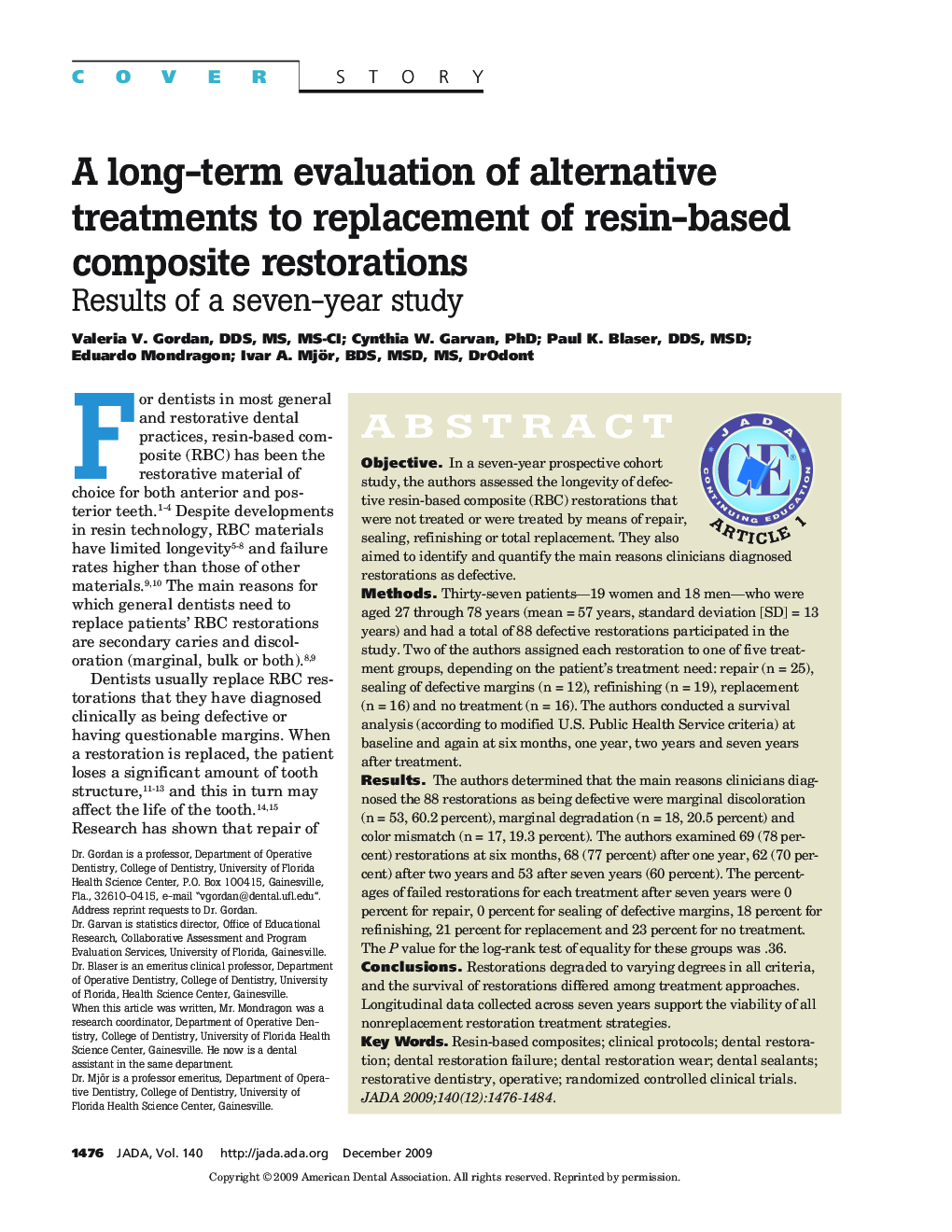| Article ID | Journal | Published Year | Pages | File Type |
|---|---|---|---|---|
| 3138979 | The Journal of the American Dental Association | 2009 | 9 Pages |
ABSTRACT ObjectiveIn a seven-year prospective cohort study, the authors assessed the longevity of defective resin-based composite (RBC) restorations that were not treated or were treated by means of repair, sealing, refinishing or total replacement. They also aimed to identify and quantify the main reasons clinicians diagnosed restorations as defective.MethodsThirty-seven patients—19 women and 18 men—who were aged 27 through 78 years (mean = 57 years, standard deviation [SD] = 13 years) and had a total of 88 defective restorations participated in the study. Two of the authors assigned each restoration to one of five treatment groups, depending on the patient's treatment need: repair (n = 25), sealing of defective margins (n = 12), refinishing (n = 19), replacement (n = 16) and no treatment (n = 16). The authors conducted a survival analysis (according to modified U.S. Public Health Service criteria) at baseline and again at six months, one year, two years and seven years after treatment.ResultsThe authors determined that the main reasons clinicians diagnosed the 88 restorations as being defective were marginal discoloration (n = 53, 60.2 percent), marginal degradation (n = 18, 20.5 percent) and color mismatch (n = 17, 19.3 percent). The authors examined 69 (78 percent) restorations at six months, 68 (77 percent) after one year, 62 (70 percent) after two years and 53 after seven years (60 percent). The percentages of failed restorations for each treatment after seven years were 0 percent for repair, 0 percent for sealing of defective margins, 18 percent for refinishing, 21 percent for replacement and 23 percent for no treatment. The P value for the log-rank test of equality for these groups was .36.ConclusionsRestorations degraded to varying degrees in all criteria, and the survival of restorations differed among treatment approaches. Longitudinal data collected across seven years support the viability of all nonreplacement restoration treatment strategies.
